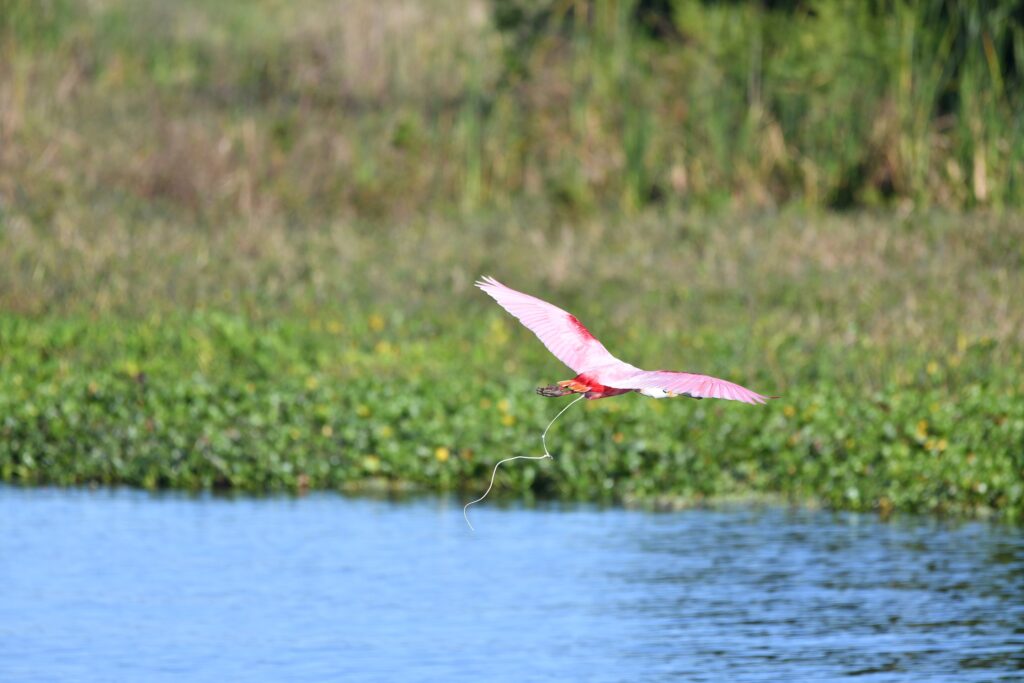Birds have evolved a number of anatomical and physiological adaptations to reduce weight for flight – lightweight skeleton, fused bones, no teeth, no sweat glands, few scales, an aerodynamic body, and, in most cases, no urinary bladder. Mammals have a urinary bladder, used to eliminate the products of protein digestion. Water in the bladder dissolves urea, the chief nitrogenous waste product and the solution is excreted as urine.
To save weight, birds do not carry waste in a bladder filled with urine but excrete both liquid and solid waste products together in a semi-solid paste-like form. (The white part is the pee and the black center the poop.) Rather than urea, birds produce uric acid which is relatively insoluble in water thereby minimizing water loss. Uric acid is a highly concentrated form of nitrogenous waste, requiring less energy to produce and excrete compared to urea. Produced by the liver and excreted by the kidneys, it is 60 to 80 percent of the total nitrogen excreted by birds. The pasty elimination comes out of the cloaca, a common chamber that serves as the exit for the digestive, urinary, and reproductive system.

And they often poop when taking off, lightening the load while getting airborne, like this Roseate Spoonbill.
The kidneys in birds are highly efficient, recycling much of the water that goes through them. The cloaca also serves to reabsorb water as it passes through, concentrating the uric acid solution.
In all ratites (Ostriches, emus, cassowaries, rheas, and kiwis, all flightless birds, and except for the kiwi, large) a particularly strong sphincter results in separate defecation and voiding of urine: feces are stored in the rectum, whereas urine is mainly stored in the proctodeum, a kind of urinary bladder. The liquid is excreted first, then the solid matter.
Birds lay eggs and uric acid plays a crucial role in the formation of eggshells. Calcium ions are required to form the eggshell and uric acid helps to conserve calcium by precipitating it as insoluble salts, allowing the birds to utilize calcium efficiently in eggshell formation.
Bird droppings can often leave stains on surfaces due presence of uric acid which is highly acidic and can corrode or etch certain materials, leading to stains. The acidic nature of uric acid makes it capable of breaking down and discoloring various surfaces. Bird droppings may contain pigments derived from the birds’ diet; berries or fruits consumed by birds can contain colorful compounds that are excreted along with their waste. If bird droppings are left on a surface for an extended period, they can dry out and become more difficult to remove. Over time, the compounds in the droppings may chemically react with the surface, leading to staining that is more challenging to eliminate. And it can damage cars – read my blog Red Cars and Bird Poop.
But bird poop, known as guano if it comes from seabirds or bats, has nutrients and is often used as fertilizer, so it’s not all bad.
Recently, while birdwatching, a bird flew out of the bushes and “pooped” on my hand. Upon examination, its contents were blueberries, thus a fruit eater!
This article is very usefull and I get some very interesting information about birds physiological adaptation along with cloaca and reproductive system.
Thanks for sharing..